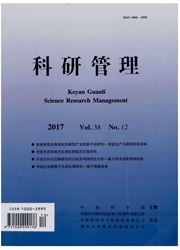

 中文摘要:
中文摘要:
对外直接投资(OFDI)对母国技术进步的逆向技术溢出效应是国际经济学研究的一个较新论题,也是中国政府推出“走出去”战略的重要预期之一。本文利用2003—2009年省际面板数据,采用非线性门槛模型对我国OFDI的逆向技术溢出效应以及国内外技术差距和OFDI规模等变量对逆向技术溢出的影响进行了实证分析。研究结果表明:在开放条件下,我国OFDI不仅存在逆向技术溢出效应,而且这种效应存在显著的空间异质性。这种地区差异主要来自于OFDI规模与技术势差的影响,OFDI规模和技术势差分别具有单一和双门槛效应。为此,针对我国空间发展的不平衡性,应采取差异化的政策措施,充分发挥OFDI逆向技术溢出效应。
 英文摘要:
英文摘要:
The reverse technology spillover effect of the outward foreign direct investment (OFDI) to the technological progress of the home country is a relatively new topic of the international economics and it is also one of the important expectations for which the Chinese government launched the ' going out' strategy. The paper applies the nonlinear threshold model to study empirically the reverse technology spillover effect of China' s OFDI and the impact of technology gap between China and the world, the OFDI scale and other variables on it based on the inter - provincial panel data from 2003 - 2009. The results show that under the open economy condition, the reverse technology spillovers effect of China' s OFDI really exists, but there is a large difference in reverse technology spillover among regions of China, which is conditioned by the OFDI scale and technology gap. The OFDI scale and technology gap separately has a single and dual - threshold effect. Therefore, according to the imbalance of regional developm3nt in China, the government should adopt different policies to achieve the reverse technology spillovers effect.
 同期刊论文项目
同期刊论文项目
 同项目期刊论文
同项目期刊论文
 期刊信息
期刊信息
